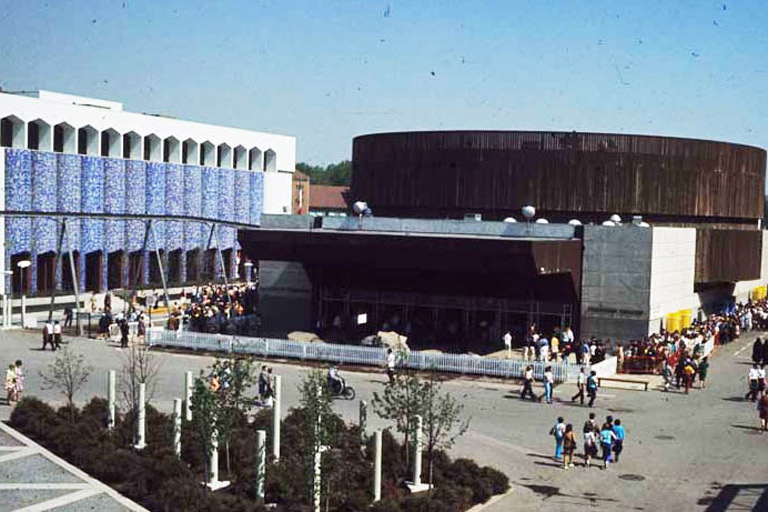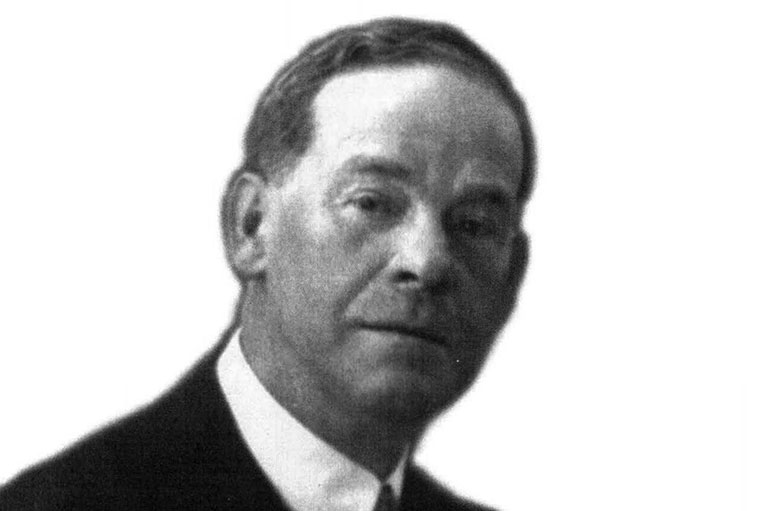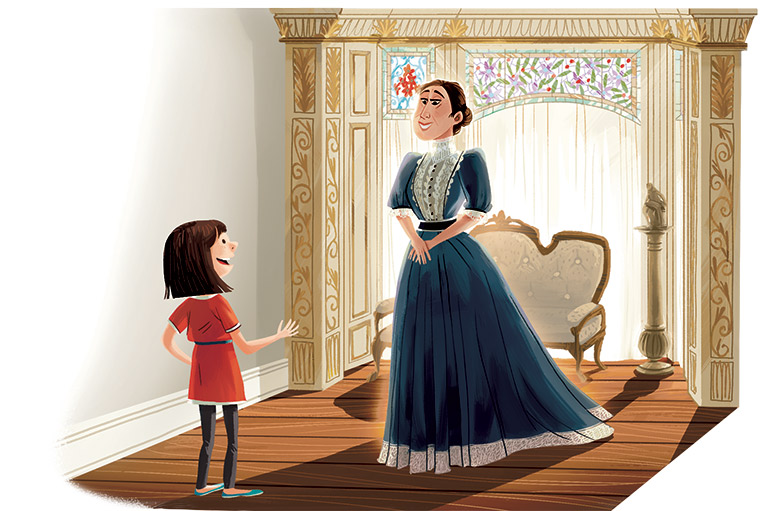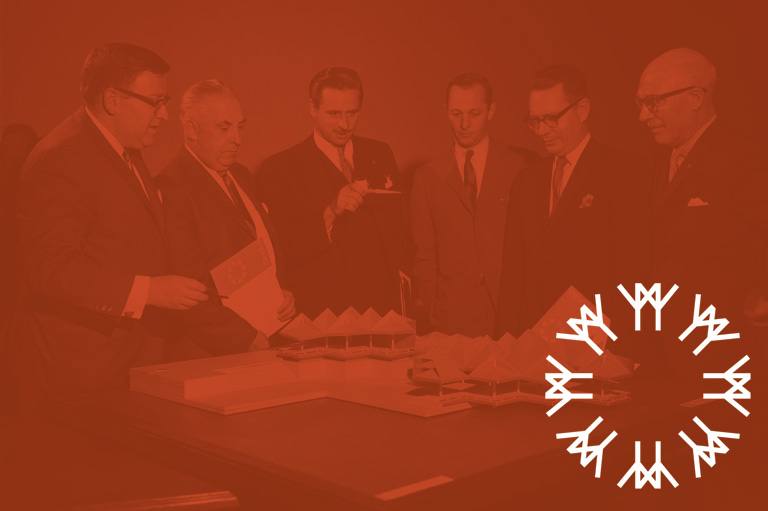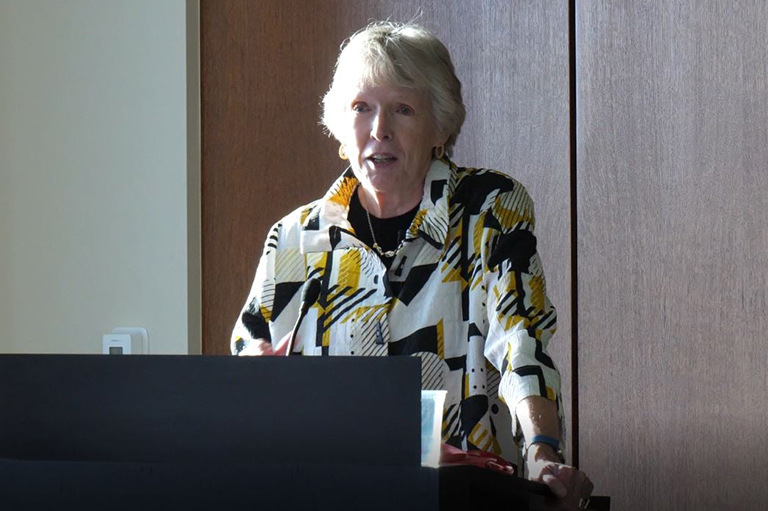Nazaire Dugas | New Brunswick’s first professional Acadian architect
-
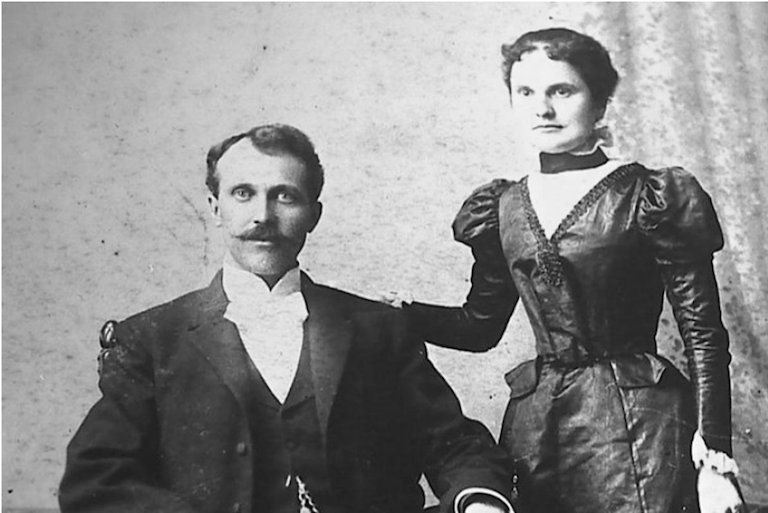 Portrait of Nazaire Dugas with his first wife, Rose Moreau. Photo taken at their wedding in Cacouna, Quebec, 1898.Guy Beaucage and Diane Landry Photo Collection
Portrait of Nazaire Dugas with his first wife, Rose Moreau. Photo taken at their wedding in Cacouna, Quebec, 1898.Guy Beaucage and Diane Landry Photo Collection -
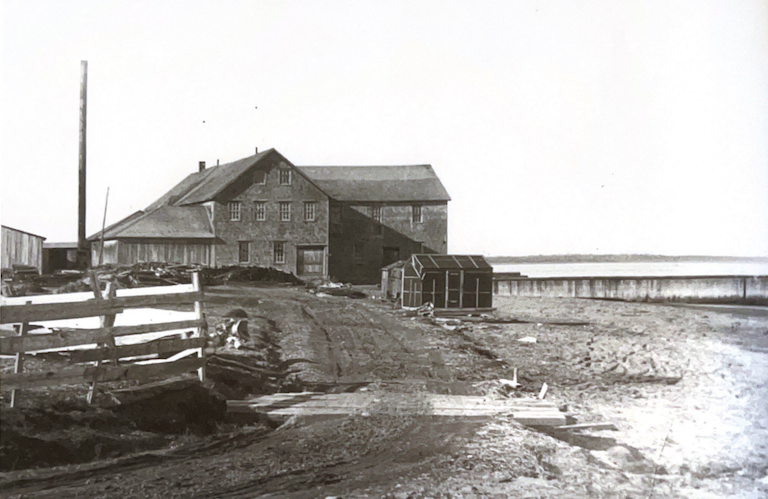 Mill owned by brothers Henri and Nazaire Dugas, Haut-Caraquet, N.B., 1899. This was a very important regional business that supplied lumber and finishings for several major projects of the era. The mill went up in flames in July of 1946. Only two wood-planes and a toolbox were saved from the fire.Diane Landry Photo Collection (excerpted from Yvon Cormier, Caraquet Le plus long village au monde, Les Éditions de la francophonie, 2015, page 152).
Mill owned by brothers Henri and Nazaire Dugas, Haut-Caraquet, N.B., 1899. This was a very important regional business that supplied lumber and finishings for several major projects of the era. The mill went up in flames in July of 1946. Only two wood-planes and a toolbox were saved from the fire.Diane Landry Photo Collection (excerpted from Yvon Cormier, Caraquet Le plus long village au monde, Les Éditions de la francophonie, 2015, page 152). -
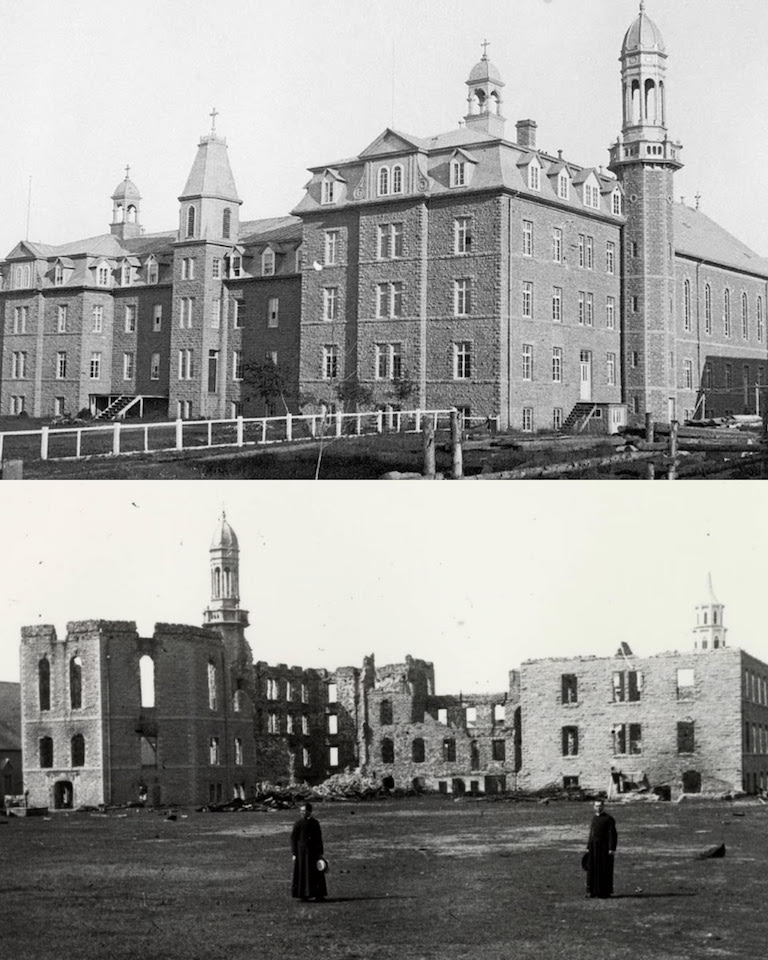 Collège Sacré-Cœur in Caraquet, N.B. Built in 1894, this school educated hundreds of boys from 1899 to 1915, before being destroyed by fire in December 1915.Top photo: APNB fond Père Courtois (excerpted from Yvon Cormier, Caraquet Le plus long village au monde, Les Éditions de la francophonie, 2015, page 115). Bottom photo: Radio-Canada Archives.
Collège Sacré-Cœur in Caraquet, N.B. Built in 1894, this school educated hundreds of boys from 1899 to 1915, before being destroyed by fire in December 1915.Top photo: APNB fond Père Courtois (excerpted from Yvon Cormier, Caraquet Le plus long village au monde, Les Éditions de la francophonie, 2015, page 115). Bottom photo: Radio-Canada Archives. -
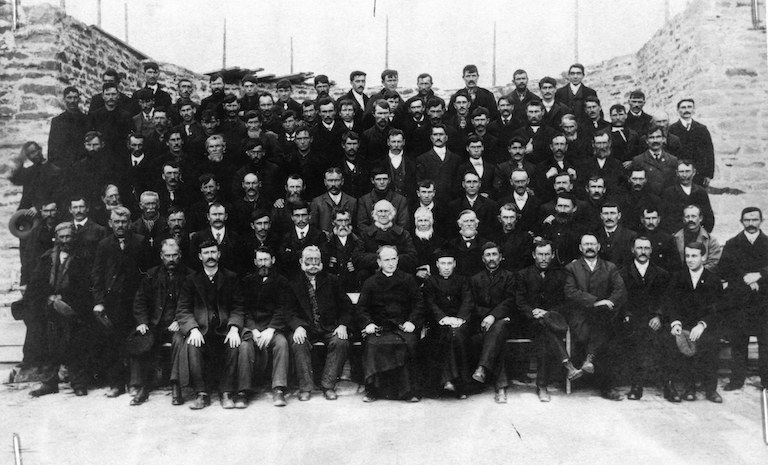 Men in Bas-Caraquet in front of the main part of the church while it was under construction. Circa 1904.Fidèle Thériault Collection
Men in Bas-Caraquet in front of the main part of the church while it was under construction. Circa 1904.Fidèle Thériault Collection -
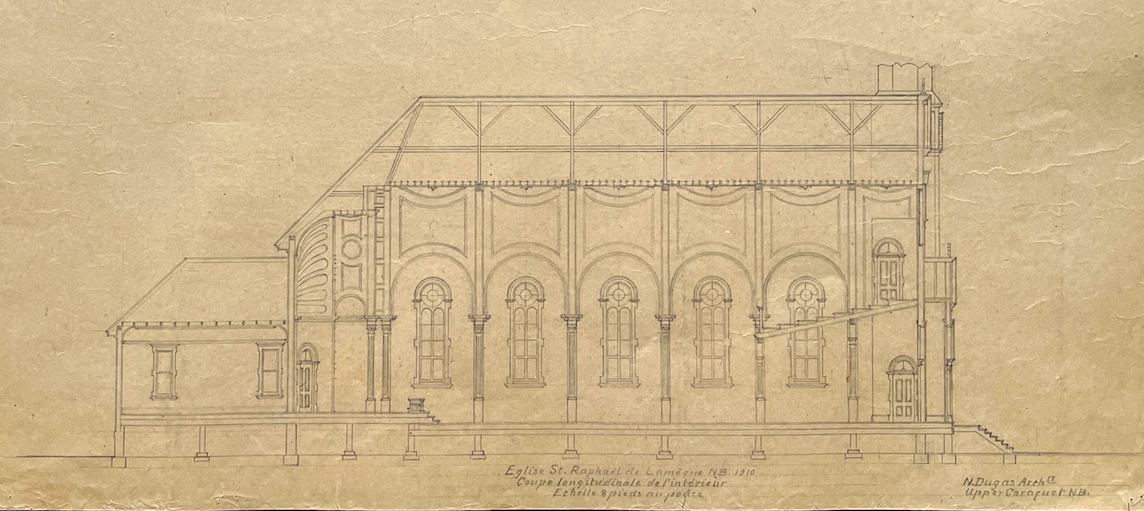 Longitudinal section of Saint-Raphaël Church in Lamèque, NB. 1910.
Longitudinal section of Saint-Raphaël Church in Lamèque, NB. 1910. -
 Details of the large framework of Saint-Paul Church in Bas-Caraquet. The variety of scales Nazaire Dugas used in his drawings (from general plans to various details) demonstrate his overall understanding of architectural projects and his good technical knowledge.
Details of the large framework of Saint-Paul Church in Bas-Caraquet. The variety of scales Nazaire Dugas used in his drawings (from general plans to various details) demonstrate his overall understanding of architectural projects and his good technical knowledge. -
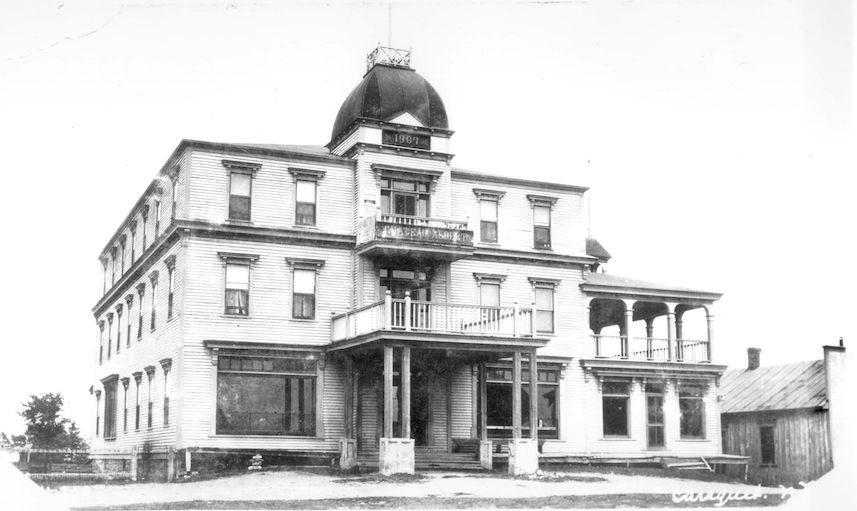 Château Albert, Caraquet NB. Built in 1907 according to Dugas’ plans, it was destroyed by fire in 1955. A replica of this iconic hotel was built at the Village Historique Acadien and is still in operation today.Yvon Cormier Photo Collection
Château Albert, Caraquet NB. Built in 1907 according to Dugas’ plans, it was destroyed by fire in 1955. A replica of this iconic hotel was built at the Village Historique Acadien and is still in operation today.Yvon Cormier Photo Collection -
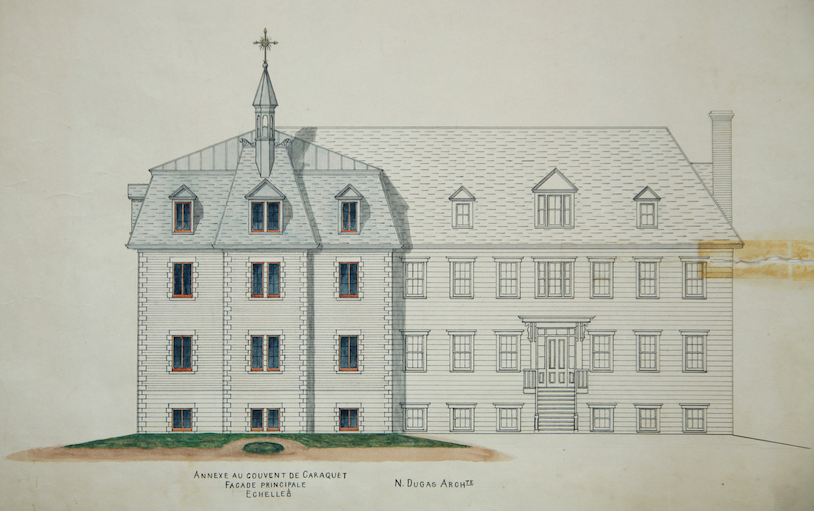 Elevation of the annex of the Notre-Dame Convent in Caraquet, NB. During construction in 1905, builders had to call in masons from Beauport, Quebec, due to a labour shortage. This situation may explain why Dugas opted for wood in his later projects.
Elevation of the annex of the Notre-Dame Convent in Caraquet, NB. During construction in 1905, builders had to call in masons from Beauport, Quebec, due to a labour shortage. This situation may explain why Dugas opted for wood in his later projects. -
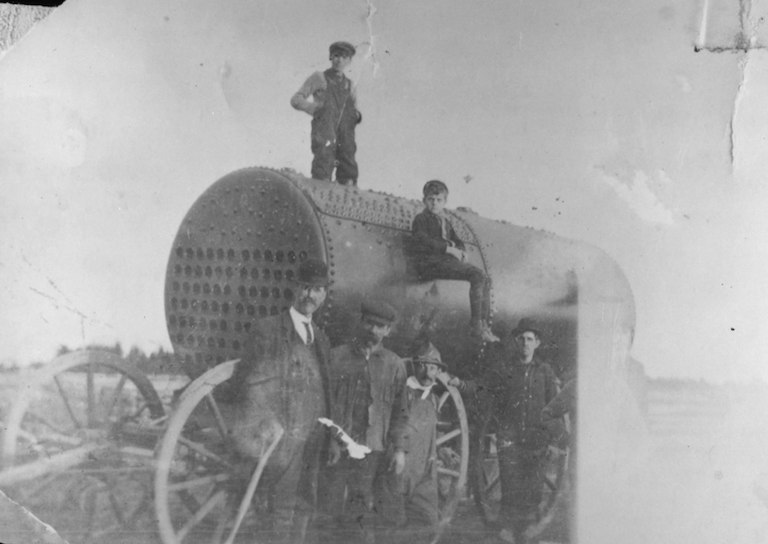 Steam boiler for the Dugas brothers’ mill, circa 1910. Francis Dugas is seen at the top, Albert (Nazaire’s son) Dugas in the middle and, at the bottom Nazaire Dugas, Théotime Dugas, Ferdinand Dugas, and Pierre Dugas.Yvon Cormier Photo Collection
Steam boiler for the Dugas brothers’ mill, circa 1910. Francis Dugas is seen at the top, Albert (Nazaire’s son) Dugas in the middle and, at the bottom Nazaire Dugas, Théotime Dugas, Ferdinand Dugas, and Pierre Dugas.Yvon Cormier Photo Collection -
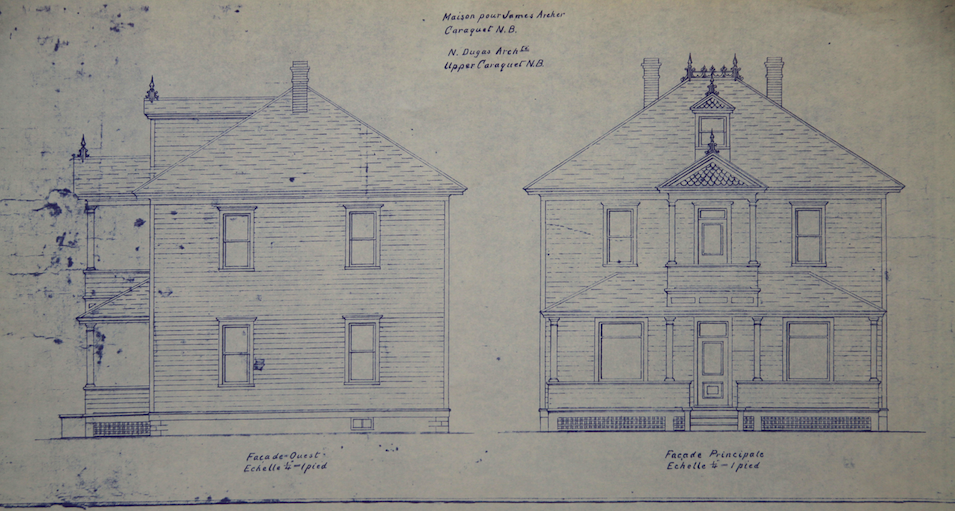 Elevations of James Archer’s house. Built in Caraquet in 1913, this home later housed Caraquet’s telephone exchange from 1933 until the 1960s. It is one of the few homes by Dugas that is well documented and still exists today.
Elevations of James Archer’s house. Built in Caraquet in 1913, this home later housed Caraquet’s telephone exchange from 1933 until the 1960s. It is one of the few homes by Dugas that is well documented and still exists today. -
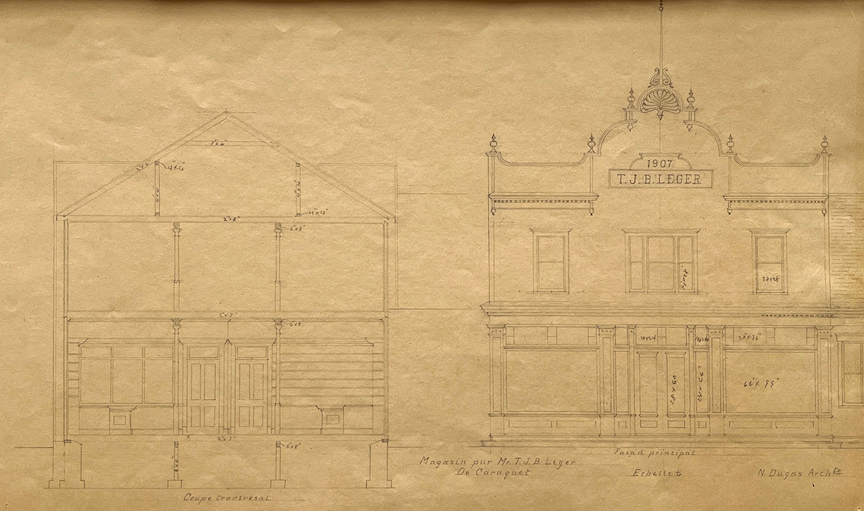 Drawing of the main façade and cross-section of Magasin TJB Leger (1907). Still in existence today, this building is now home to a busy café and bookstore in Caraquet.
Drawing of the main façade and cross-section of Magasin TJB Leger (1907). Still in existence today, this building is now home to a busy café and bookstore in Caraquet. -
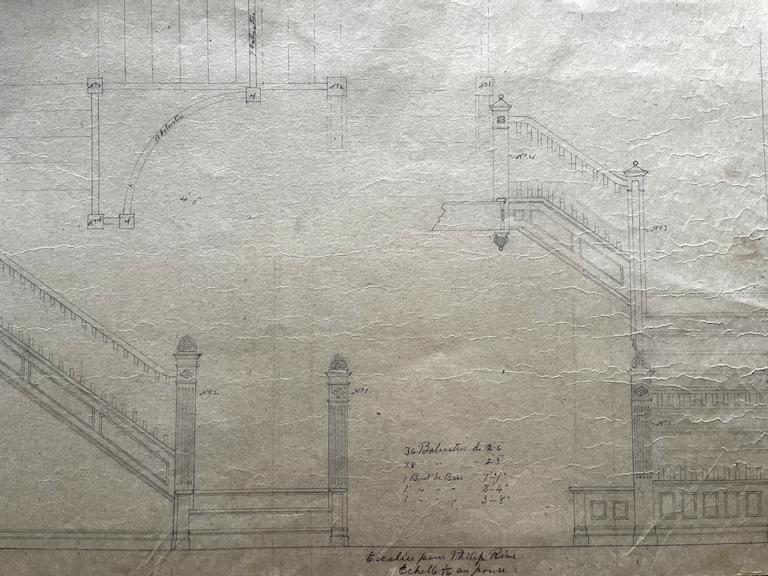 Detail of a stairway for Philip Rive. A great many of his drawings show that Dugas paid particular attention to details relating to joinery. This interest probably came about from his experience at the Itzweire et Sarrazin carpentry business owned by his first wife’s uncle.
Detail of a stairway for Philip Rive. A great many of his drawings show that Dugas paid particular attention to details relating to joinery. This interest probably came about from his experience at the Itzweire et Sarrazin carpentry business owned by his first wife’s uncle. -
 A researcher reviews Nazaire Dugas’ notebooks as part of Nordais Collectif’s research/new works project, made possible through Canada’s History Society’s 2023 John Bragg Award. These items are preserved in New Brunswick’s Provincial Archives.Photo: Nordais Collectif 2023
A researcher reviews Nazaire Dugas’ notebooks as part of Nordais Collectif’s research/new works project, made possible through Canada’s History Society’s 2023 John Bragg Award. These items are preserved in New Brunswick’s Provincial Archives.Photo: Nordais Collectif 2023 -
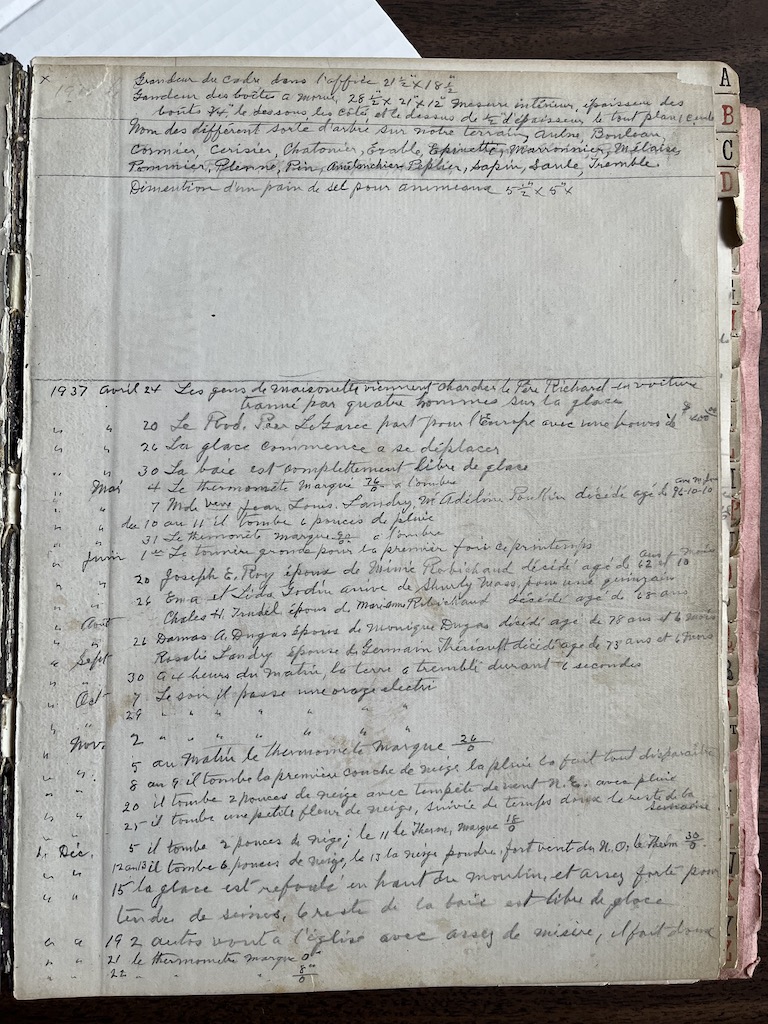 A daily note in one of Dugas’ notebooks shows that in 1937, Caraquet’s first snow fell on November 8.Photo: Nordais Collectif 2023
A daily note in one of Dugas’ notebooks shows that in 1937, Caraquet’s first snow fell on November 8.Photo: Nordais Collectif 2023 -
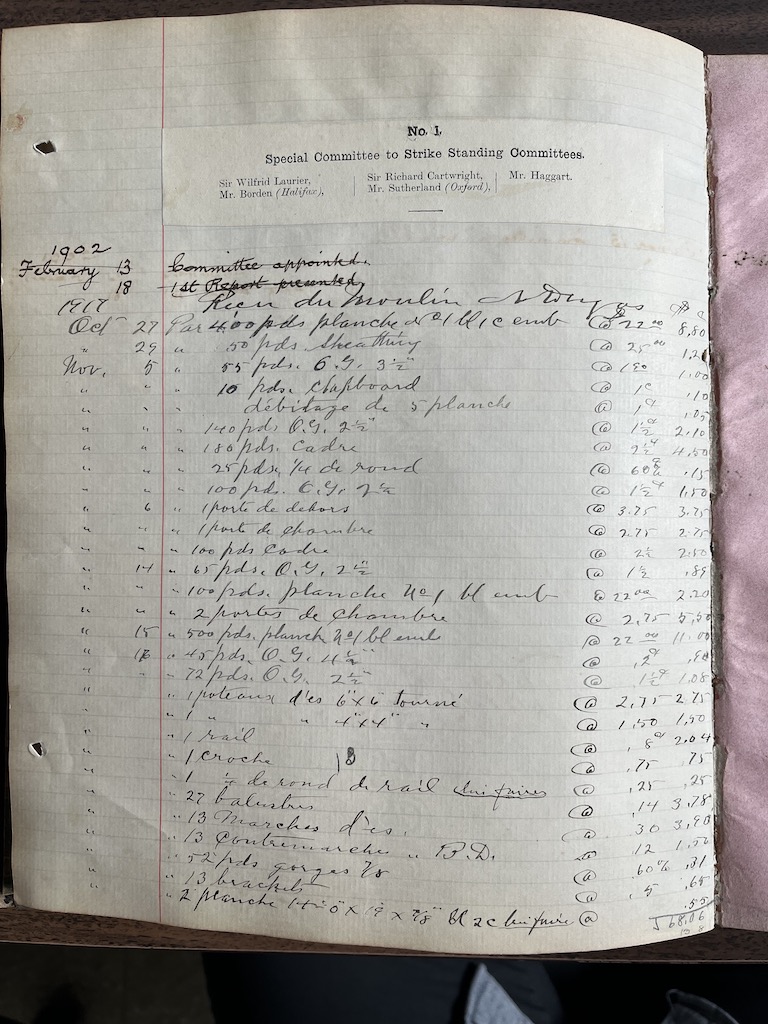 The H. & N. Dugas Mill’s list of receipts from 1918. Nazaire Dugas re-used books, including those of the chamber of commerce, for his record-keeping. The heading on this page shows that it was originally for the “Special Committee to Strike Standing Committees” on which sat Prime Minister Sir Wilfrid Laurier (1896-1911).Photo: Nordais Collectif 2023
The H. & N. Dugas Mill’s list of receipts from 1918. Nazaire Dugas re-used books, including those of the chamber of commerce, for his record-keeping. The heading on this page shows that it was originally for the “Special Committee to Strike Standing Committees” on which sat Prime Minister Sir Wilfrid Laurier (1896-1911).Photo: Nordais Collectif 2023
Born in Caraquet, New Brunswick, Nazaire Dugas (1864-1942) was the first Acadian architect to make a living from his profession. He created plans for many prominent buildings in the region, as well as a number of private residences and businesses. His conceptual, technical and practical know-how has had a major influence on the development of the entire Acadian Peninsula. Despite this, much of his work is not well-known and is at risk for demolition or disrepair.
Nazaire Dugas, 1864-1942 | New Brunswick’s first professional Acadian architect
The Acadian town of Caraquet is known for its magnificent view of Chaleur Bay. But along the town’s main boulevard, a visitor’s eyes are also drawn to the understated beauty of several buildings. There are cozy, wood-clad heritage homes decorated with detailed mouldings; a busy café whose elegant front window hints at its hundred-year history; the stone remains of a former convent, whose façade now serves as a backdrop for outdoor cultural events; and an artists’ workshop bursting with colour. These buildings share a common origin: an architect who inspired the people of the Acadian Peninsula with his quest for beauty, Nazaire Dugas.
From Caraquet to Montreal
Born in Caraquet on July 26, 1864, Nazaire Dugas was one of New Brunswick’s architectural pioneers. In the early 1880s he moved to Montreal, where two of his sisters had entered religious orders. There he trained as a carpenter in the workshop of Itzweire et Sarrazin, which belonged to the uncle of his wife, Rose Moreau. During his twenty years of residence in the city, Dugas also studied architecture under F. Bourgeault. Over this period, he directed several construction projects in the Montreal region and worked with prominent architectural contemporaries including Joseph-Honoré MacDuff, who lived from 1868 to 1918, and Louis-Roch Montbriand, who lived from 1860 to 1923.
From Montreal to Caraquet
In 1896, while still living in Montreal, he began designing houses on the Acadian Peninsula and partnered with his brother Henri to purchase a sawmill and shingle mill in Caraquet. The brothers added a flour mill, a woodworking shop, and a door, window, and moulding factory, all operating together under the company name H. & N. Dugas. Unfortunately, the entire complex would go up in flames in the summer of 1946, four years after Nazaire Dugas’s death.
In 1902, Dugas moved back to his hometown of Caraquet with his wife and their two children. The couple had six children in all — Philibert, Oscar, Yvon, Édouard, Albert, and Adrienne — before Rose fell victim to tuberculosis in 1910. Three years after her death, Dugas married Rose Haché, with whom he had a daughter, Julienne.
He remained in Caraquet for the rest of his life and was the master builder in charge of several important construction projects in the region. In addition to exercising his talents as an architect, he supplied building materials and practical knowledge through his firm, H. & N. Dugas, and likely also performed hands-on work.
An organized and meticulous man, Dugas kept an almost daily record of the goings-on in his community, including births, notable visitors, weather events, and more. He got involved in politics and maintained an excellent relationship with the local clergy. He took part in a pilgrimage to Rome in 1925, where he met Pope Pius XI. Sporting a distinctive moustache, he was also known for his gifts as a storyteller.
The Architectural Heritage of Nazaire Dugas: Its importance and fragility
Dugas left an important architectural legacy in communities across northeast New Brunswick, where the fruits of his labour can be seen in several iconic buildings that form part of the local collective identity: churches, colleges, convents, schools, businesses, and hotels. Most of his main works were constructed in the first decade of the twentieth century. These include the church in Bas-Caraquet (1904), the expansions of the Collège de Caraquet (1903 and 1907), and the convent of the Sœurs de la Congrégation Notre-Dame (1905), among others. A multi-talented architect, he also drew up the plans and blueprints for several presbyteries, parish halls, and private residences. In addition, he designed furniture, sleds, barrels, and various pieces of technical equipment.
His buildings were always at the centre of local community life, adapted to a wide variety of uses including a general store, a bed and breakfast, a hotel, a place of worship, an educational facility, a telephone exchange, an eco-museum, a café-bakery, and an artist’s residence.
Dugas died in 1942; today, only about ten buildings remain that he is known to have designed or built. Most recently, the church in Bas-Caraquet church was, unfortunately, destroyed by fire in 2018. The non-profit organization Nordais Collectif is sponsoring a research/new works project that aims to highlight this unique individual’s work and archives.
Themes associated with this article
Advertisement
The John Bragg Award is made possible with the generous support of the River Philip Foundation.


